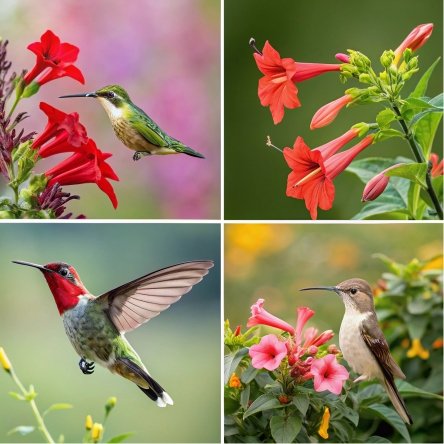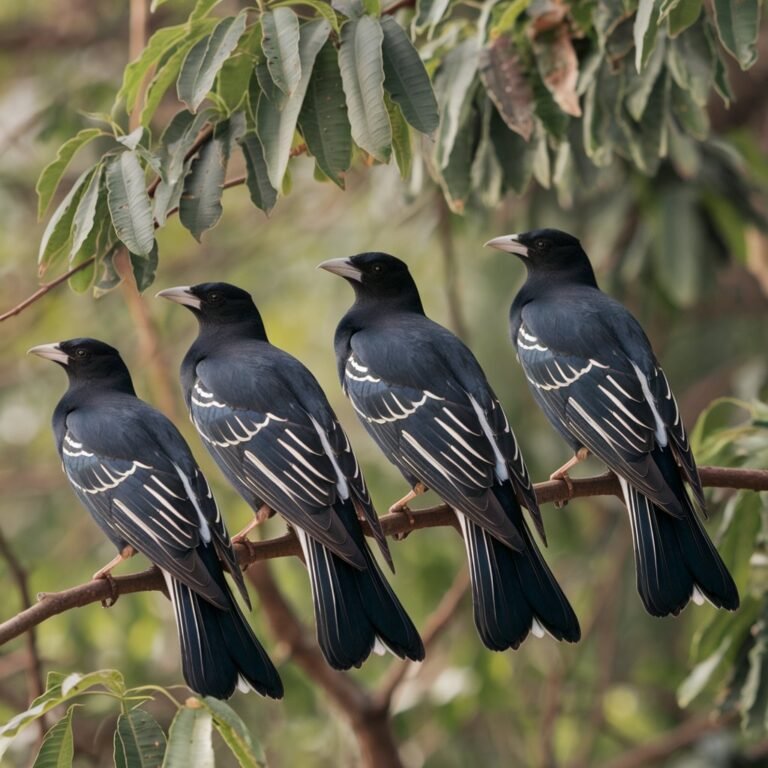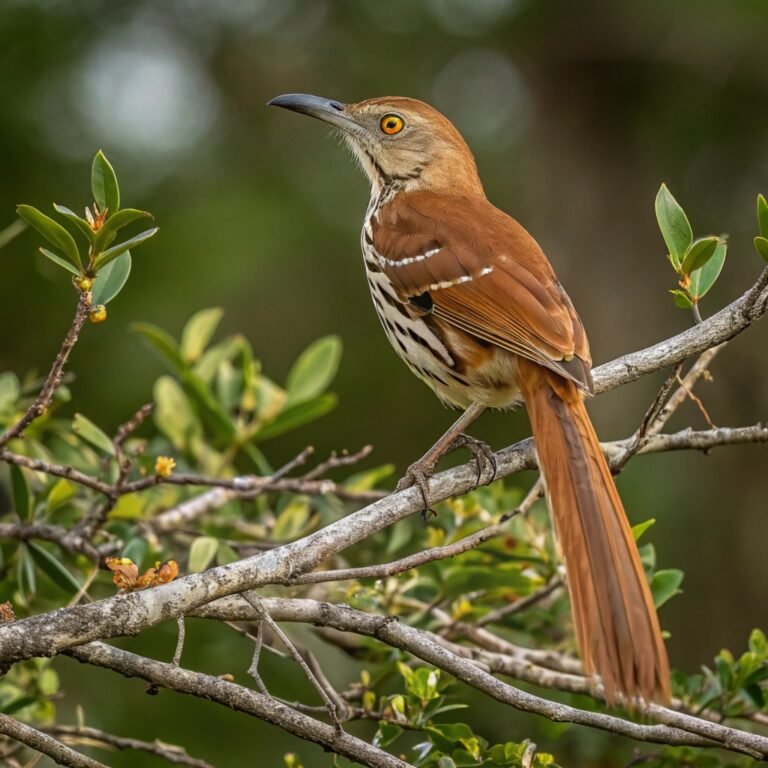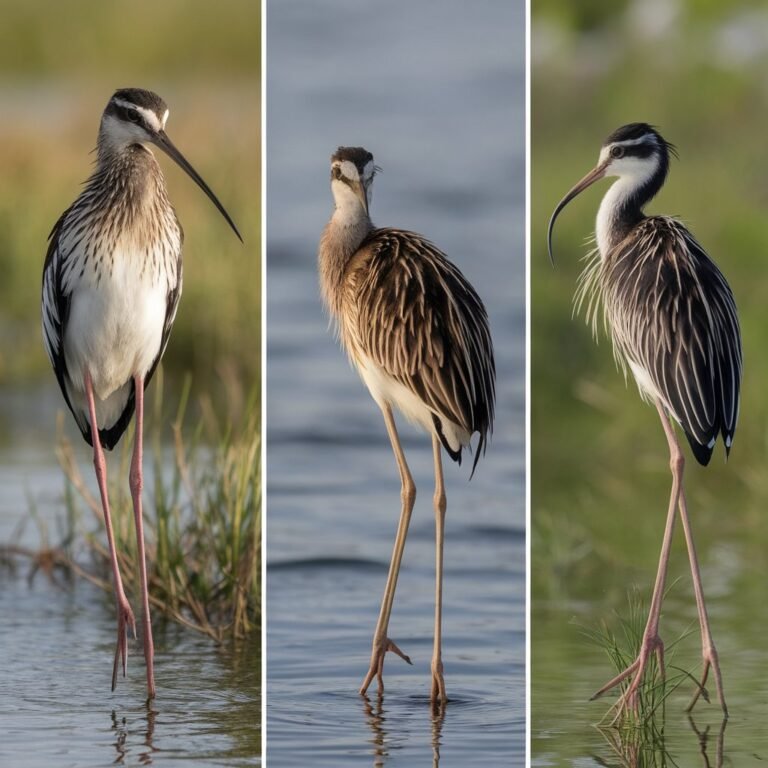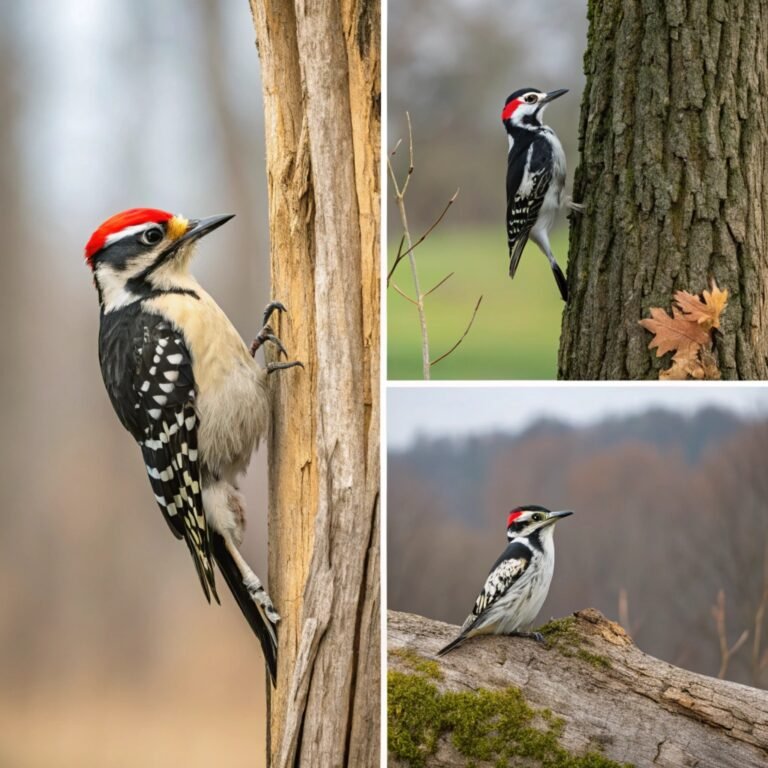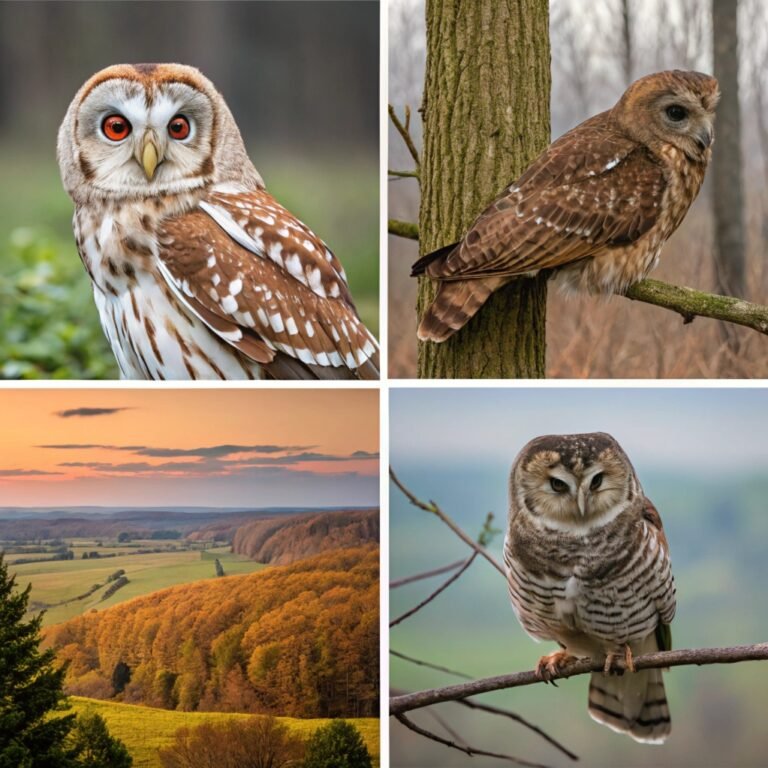Discover the Top 10 Flowers That Attract Hummingbirds: Creating a Vibrant Garden Oasis
Creating a garden that attracts hummingbirds is a delightful way to bring vibrant life and color to your outdoor space.
These tiny, energetic birds are not only fascinating to watch but also play a crucial role in pollination.
By choosing the right flowers, you can create a haven for hummingbirds, ensuring they visit your garden regularly.
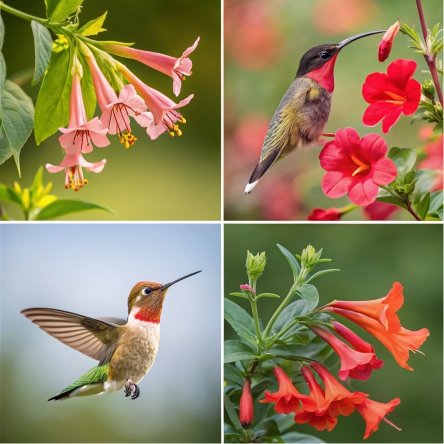
Key Takeaways
- Hummingbirds are attracted to brightly colored, tubular flowers that provide easy access to nectar.
- Red, orange, and pink are particularly appealing colors for hummingbirds.
- Planting a variety of flowers can attract not only hummingbirds but also other pollinators like bees and butterflies.
- Avoid using pesticides in your garden to ensure a safe environment for hummingbirds and other beneficial insects.
- Consider the blooming seasons of your plants to provide a continuous food source for hummingbirds throughout the year.
- Incorporate native plants into your garden to support local ecosystems and provide familiar food sources for hummingbirds.
- Hummingbird feeders can supplement natural nectar sources, especially during migration periods.
- Water features like misters or small fountains can attract hummingbirds, as they enjoy bathing and drinking from them.
- Creating a layered garden with trees, shrubs, and flowers can provide shelter and nesting sites for hummingbirds.
- Regularly clean feeders to prevent the growth of harmful mold and bacteria.
Introduction to Hummingbird-Friendly Gardens
Creating a hummingbird-friendly garden involves selecting the right plants and flowers that provide ample nectar.
These gardens not only attract hummingbirds but also enhance the beauty of your outdoor space.
By understanding the preferences of these birds, you can create a vibrant and lively garden that will be a haven for these tiny flyers.
Hummingbirds are drawn to gardens with a diverse array of flowers, especially those with tubular shapes and bright colors.
When planning your garden, consider incorporating a mix of annuals, perennials, and shrubs to provide a continuous source of nectar throughout the growing season.
It’s also important to create a safe environment for hummingbirds by avoiding the use of pesticides and providing clean water sources.
By following these guidelines, you’ll be well on your way to creating a thriving hummingbird habitat in your own backyard.
Why Hummingbirds Love Certain Flowers
Hummingbirds are drawn to certain flowers due to their bright colors and tubular shapes, which make it easy for them to access nectar.
Flowers in shades of red, orange, and pink are particularly attractive to these birds. The shape of the flower is just as important as its color, with long, tubular blooms being ideal for hummingbirds’ long beaks and tongues.
These tiny birds have incredibly fast metabolisms and need to feed frequently throughout the day. They are attracted to flowers that produce high volumes of nectar to meet their energy needs.
Hummingbirds have excellent color vision and can see into the ultraviolet spectrum, which helps them locate nectar-rich flowers from a distance.
Additionally, the availability of nectar-rich flowers throughout the year ensures that hummingbirds have a consistent food source.
By planting a variety of flowers that bloom at different times, you can create a year-round buffet for these delightful visitors to your garden.
Top 10 Flowers That Attract Hummingbirds
In this section, we’ll explore the top 10 flowers that are known to attract hummingbirds. These flowers not only provide nectar but also add beauty and color to your garden.
Each of these plants has unique characteristics that make them irresistible to hummingbirds and will help transform your outdoor space into a hummingbird haven.
When selecting flowers for your hummingbird garden, consider factors such as bloom time, color, and nectar production.
By choosing a variety of plants that flower at different times throughout the season, you can ensure a constant food source for these energetic birds.
Remember to also consider your local climate and soil conditions when selecting plants. Native species are often the best choice as they are well-adapted to your area and require less maintenance.
With the right selection of flowers, you’ll be able to enjoy the delightful sight of hummingbirds flitting from bloom to bloom in no time.
1. Trumpet Honeysuckle
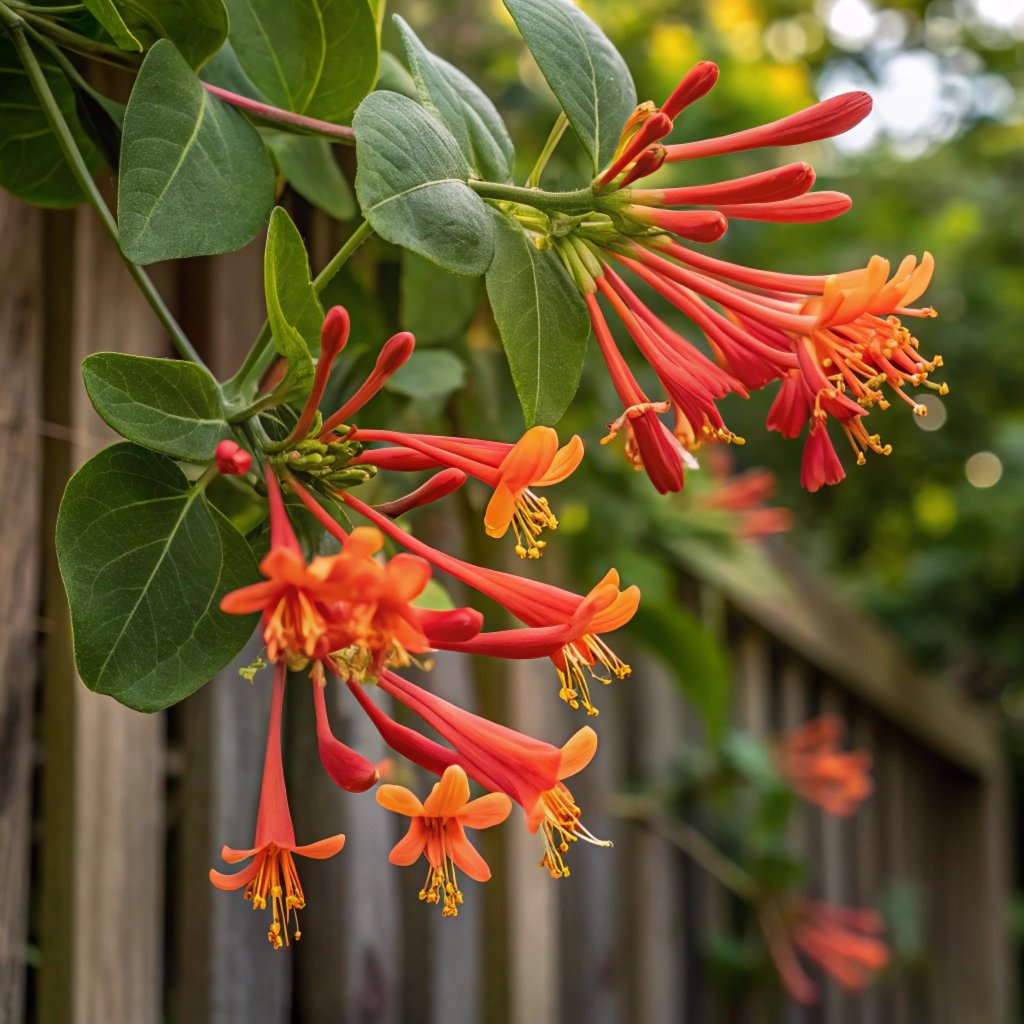
Trumpet Honeysuckle (Lonicera sempervirens) is a favorite among hummingbirds due to its bright red tubular flowers.
This perennial vine thrives in sunny locations and provides a reliable source of nectar throughout the growing season. Its long, trumpet-shaped blooms are perfectly suited to the hummingbird’s long beak and tongue, making it an ideal food source.
This native plant is not only attractive to hummingbirds but also to butterflies and other pollinators. It’s a low-maintenance vine that can grow up to 20 feet in length, making it perfect for covering fences, trellises, or arbors.
The glossy green leaves provide a beautiful backdrop for the vibrant flowers, which can bloom from spring through fall in some regions.
Trumpet Honeysuckle is adaptable to various soil types and is relatively drought-tolerant once established. It’s important to note that this is the native variety and not the invasive Japanese Honeysuckle.
By planting Trumpet Honeysuckle, you’re not only attracting hummingbirds but also supporting local ecosystems.
2. Bee Balm
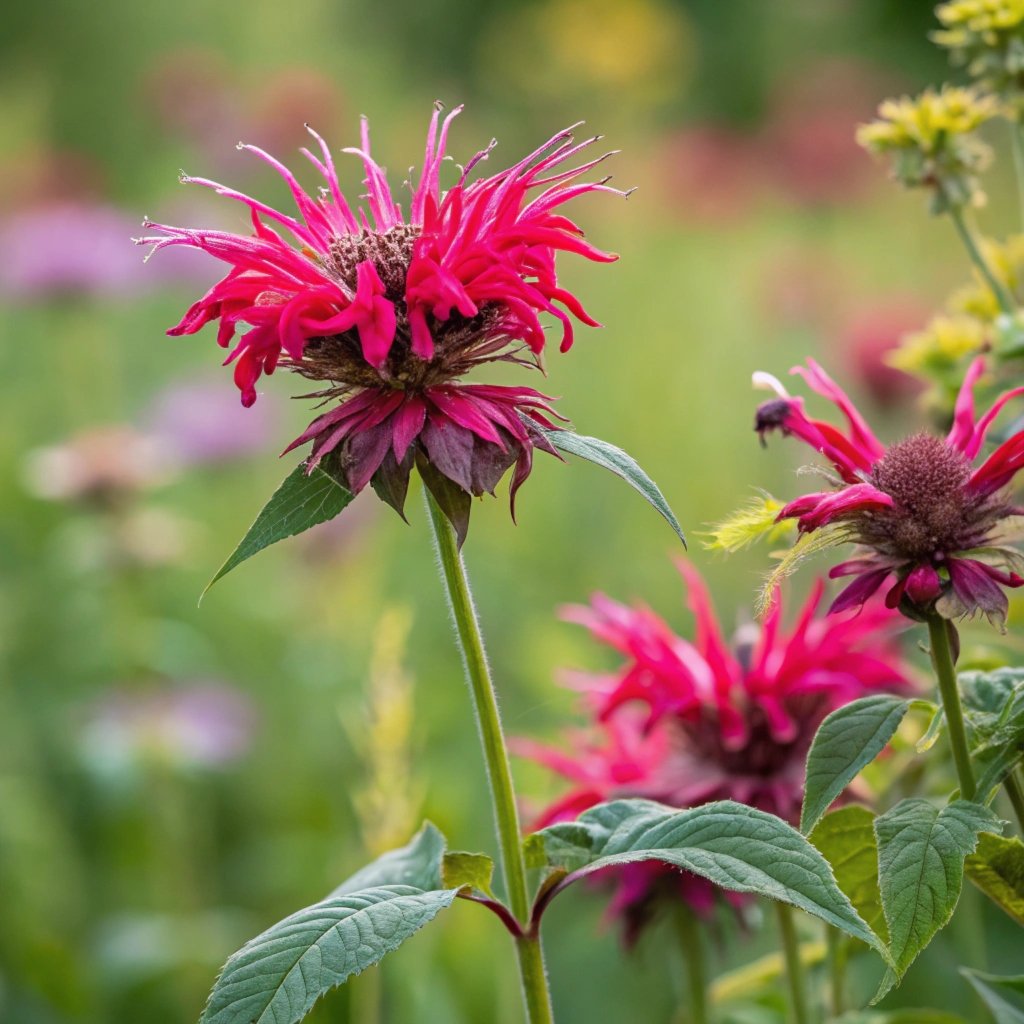
Bee Balm (Monarda) is another excellent choice for attracting hummingbirds. Its vibrant blooms and pleasant fragrance make it a popular addition to any garden.
This perennial plant produces clusters of tubular flowers in shades of red, pink, purple, and white, which are irresistible to hummingbirds.
Also known as Oswego Tea or Bergamot, Bee Balm is a member of the mint family and has aromatic foliage. It blooms from mid to late summer, providing a crucial nectar source when many other plants have finished flowering.
The plant can grow up to 4 feet tall and spreads readily, making it an excellent choice for filling in garden spaces.
Bee Balm prefers full sun to partial shade and moist, well-draining soil. It’s a hardy plant that can tolerate a range of conditions and is resistant to deer.
In addition to attracting hummingbirds, Bee Balm also draws in butterflies and bees, making it a valuable addition to any pollinator garden.
3. Cardinal Flower
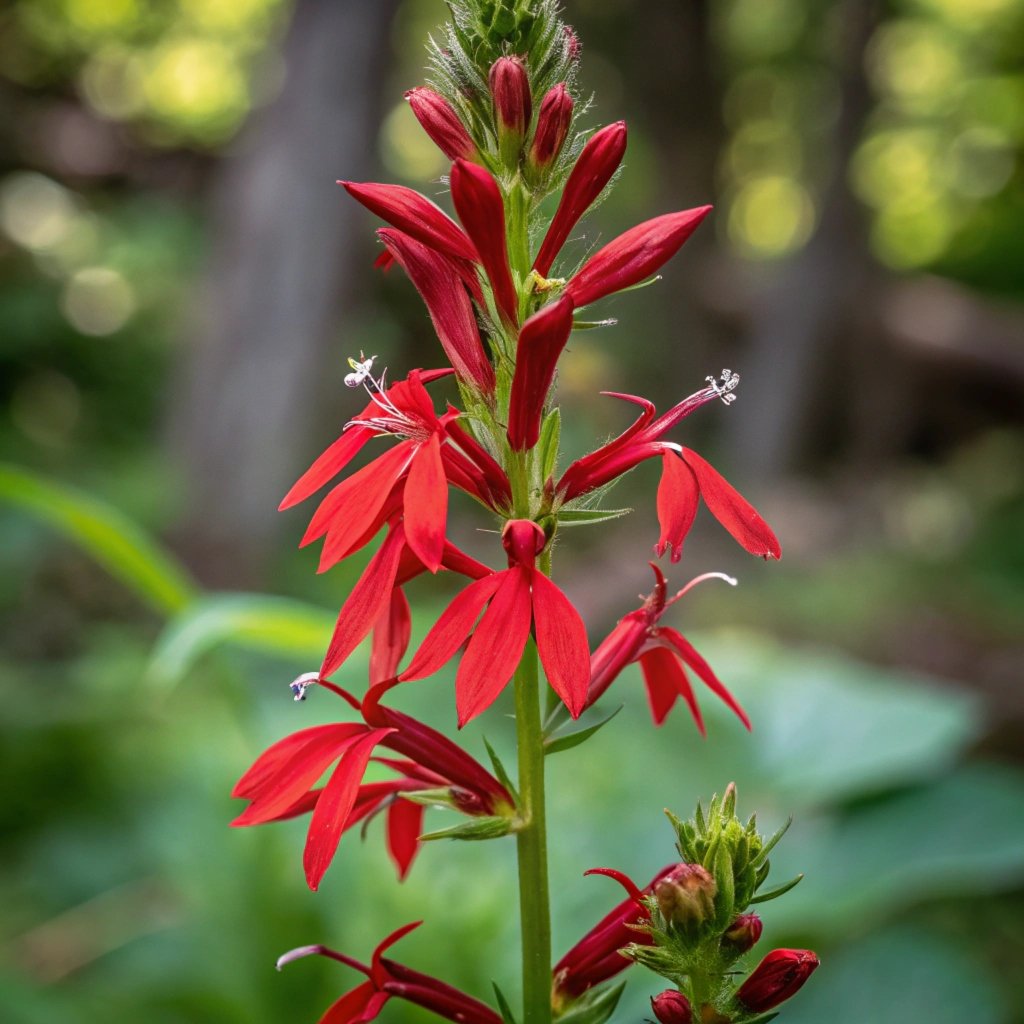
The Cardinal Flower (Lobelia cardinalis) is known for its striking red flowers that are highly attractive to hummingbirds.
This native perennial plant produces tall spikes of vibrant red blooms that can reach up to 4 feet in height. The intense color and tubular shape of the flowers make them perfectly suited for hummingbird feeding.
Cardinal Flower prefers moist soil and partial shade, making it an excellent choice for areas near water features or in woodland gardens.
It blooms from mid-summer to early fall, providing a late-season nectar source for hummingbirds. The plant’s upright growth habit adds vertical interest to garden beds and borders.
Despite its preference for moist conditions, Cardinal Flower is adaptable and can tolerate a range of soil types. It’s also deer-resistant and attracts butterflies in addition to hummingbirds.
By incorporating Cardinal Flower into your garden, you’re not only creating a beautiful display but also supporting native wildlife.
4. Salvia
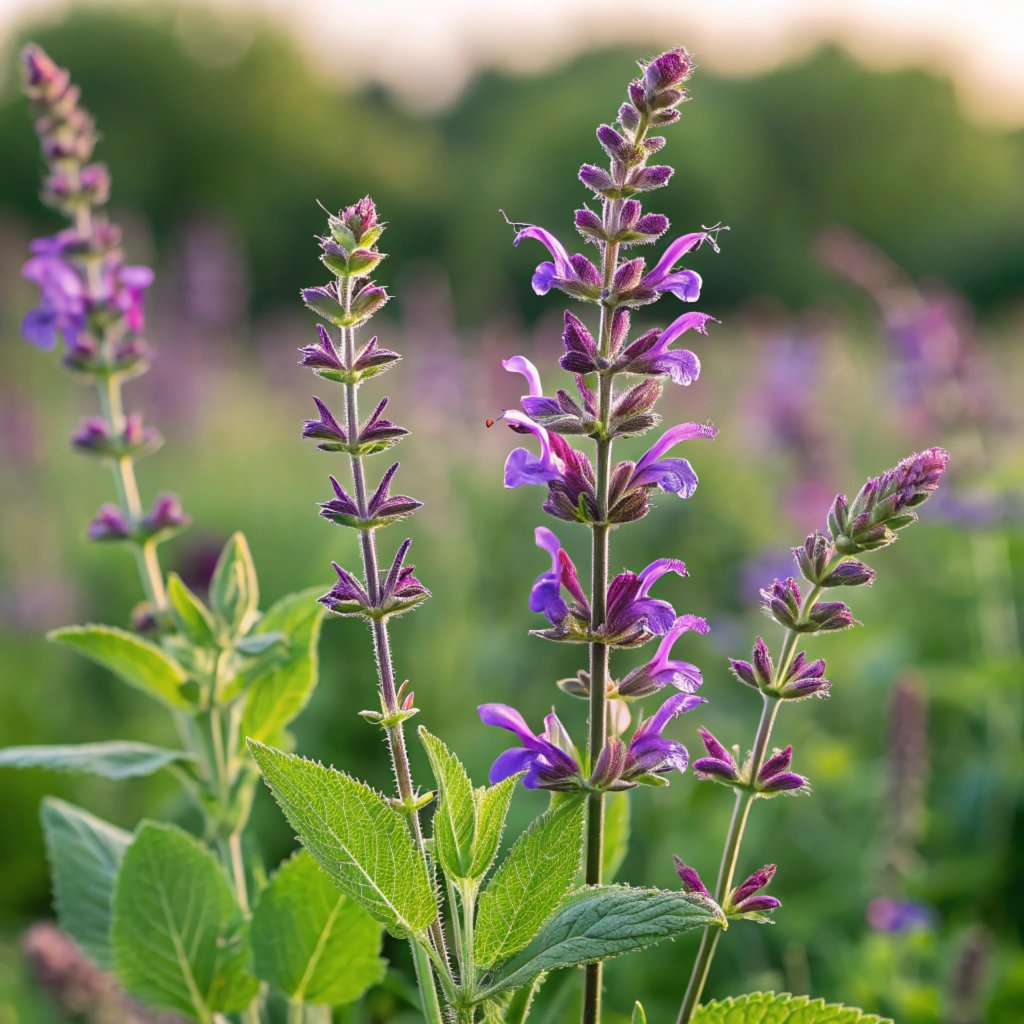
Salvia offers a variety of colors, including red, purple, and blue, making it a versatile choice for attracting hummingbirds. Its long blooming season ensures a steady supply of nectar throughout the summer and into fall.
There are many species and cultivars of Salvia, both annual and perennial, giving gardeners plenty of options to choose from.
One of the most popular varieties for hummingbirds is Scarlet Sage (Salvia splendens), which produces bright red flowers that are irresistible to these tiny birds.
Other species like Black and Blue Salvia (Salvia guaranitica) and Pineapple Sage (Salvia elegans) are also excellent choices.
Salvias are generally easy to grow and prefer full sun to partial shade. They are drought-tolerant once established and can thrive in a variety of soil types.
Many Salvia species are also deer-resistant and attract butterflies, making them valuable additions to any garden.
5. Fuchsia
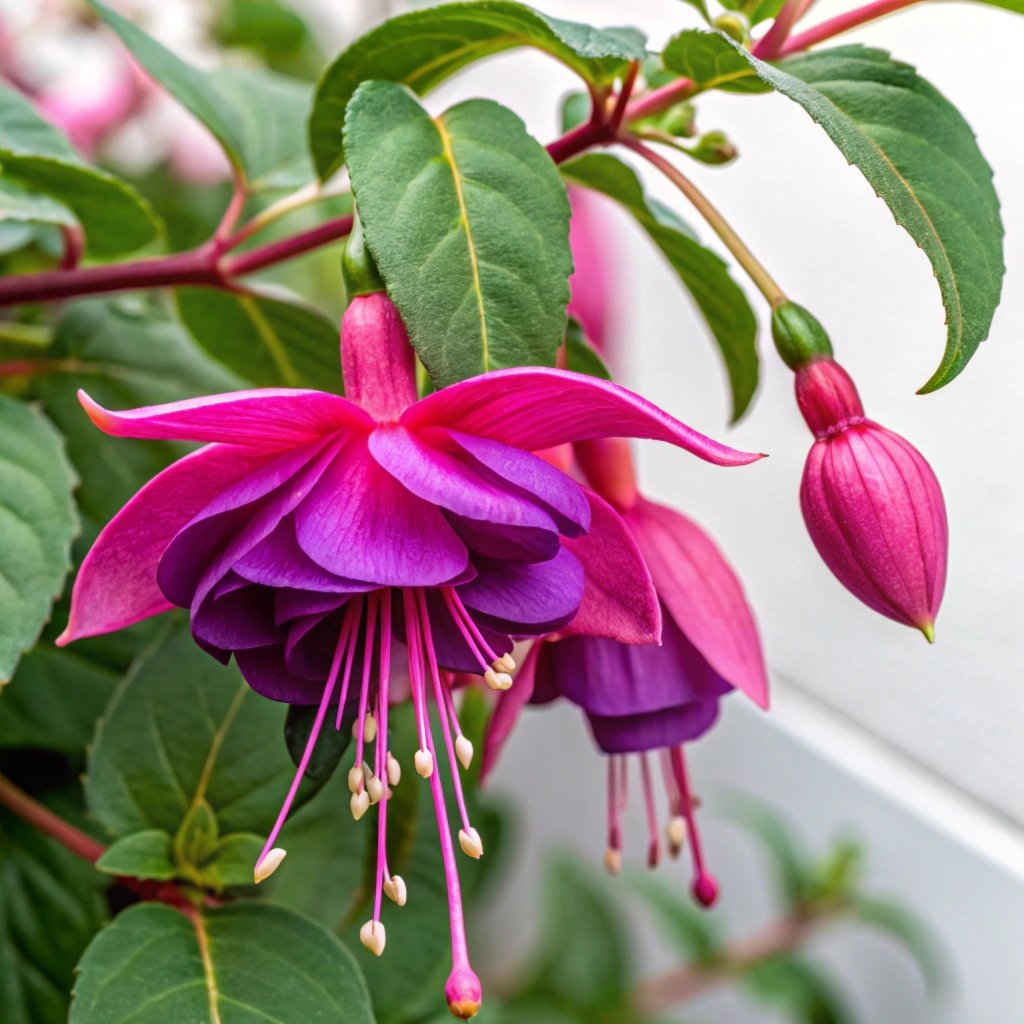
Fuchsia is a stunning plant with hanging flowers that hummingbirds find irresistible. It thrives in cooler climates and adds a touch of elegance to your garden.
The unique shape of Fuchsia flowers, with their long, pendulous blooms, is perfectly suited for hummingbird feeding.
These plants come in a variety of colors, including shades of pink, purple, red, and white.
Some popular varieties for attracting hummingbirds include Hardy Fuchsia (Fuchsia magellanica) and Cape Fuchsia (Phygelius). Fuchsias can be grown as annuals in colder regions or as perennials in milder climates.
Fuchsias prefer partial shade and moist, well-draining soil. They make excellent container plants and look stunning in hanging baskets or window boxes.
By placing Fuchsias at eye level, you can enjoy watching hummingbirds up close as they feed on the nectar-rich blooms.
6. Columbine

Columbine (Aquilegia) is an early bloomer that provides nectar in the spring. Its unique flower shape and vibrant colors make it a favorite among hummingbirds.
The spurred petals of Columbine flowers are perfectly adapted for hummingbird feeding, allowing these agile birds to access the nectar with ease.
Columbine comes in a wide range of colors, including red, pink, purple, blue, yellow, and white.
These delicate-looking perennials are surprisingly hardy and can thrive in various garden conditions. They prefer partial shade but can tolerate full sun in cooler climates.
One of the benefits of Columbine is its ability to self-seed, creating naturalized areas in the garden. It’s also deer-resistant and attracts other pollinators like bees and butterflies.
By planting Columbine, you’re providing an early-season nectar source for hummingbirds when many other plants are just beginning to grow.
7. Lupine
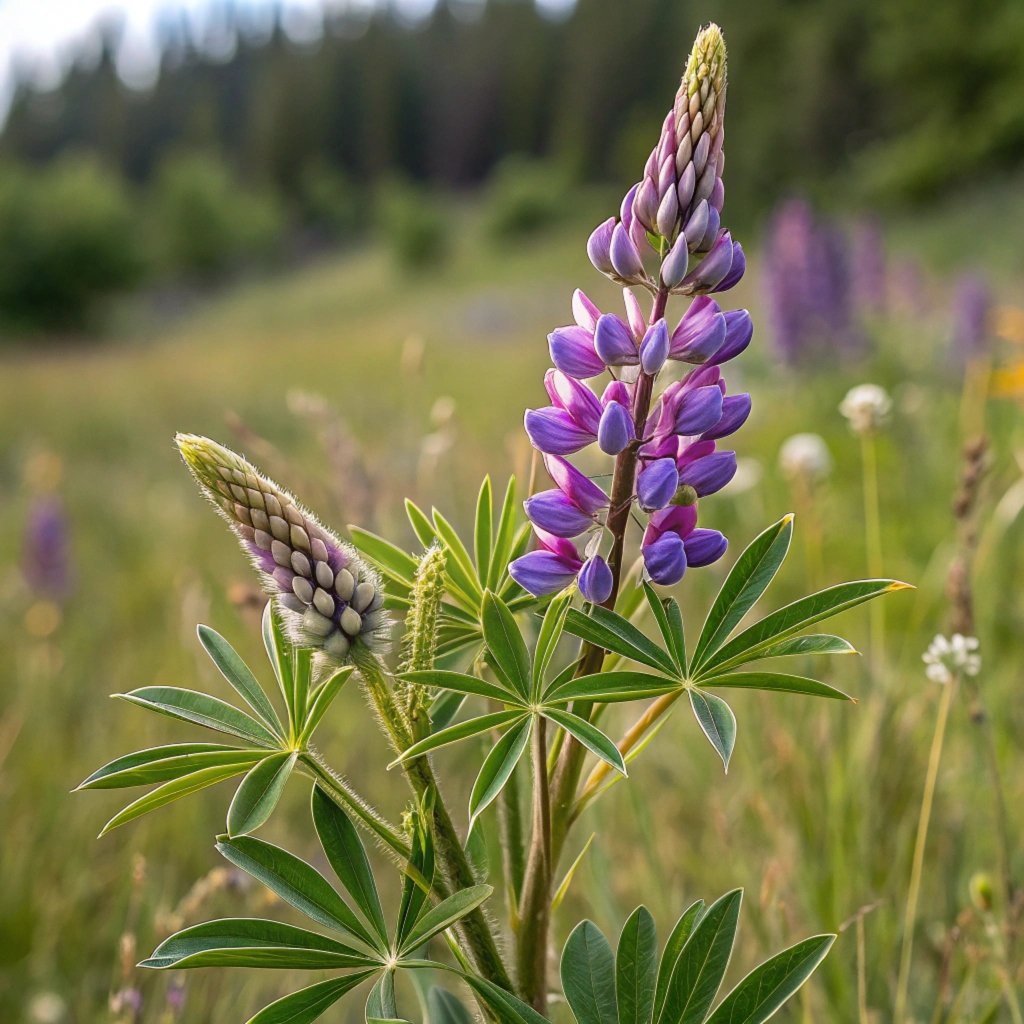
Lupine (Lupinus) offers tall spikes of flowers in various colors, attracting hummingbirds with its abundant nectar. These striking perennials produce densely packed flower spikes that can reach up to 4 feet in height, creating a dramatic vertical element in the garden.
Lupines come in a rainbow of colors, including blue, purple, pink, red, yellow, and white. The flowers bloom from late spring to early summer, providing an important nectar source for hummingbirds during this time.
The tall flower spikes allow hummingbirds to feed while hovering, which is their preferred method.
These plants prefer full sun to partial shade and well-draining soil. They are relatively low-maintenance once established and can be drought-tolerant. Lupines are also nitrogen-fixing plants, which means they can improve soil quality over time.
8. Petunia
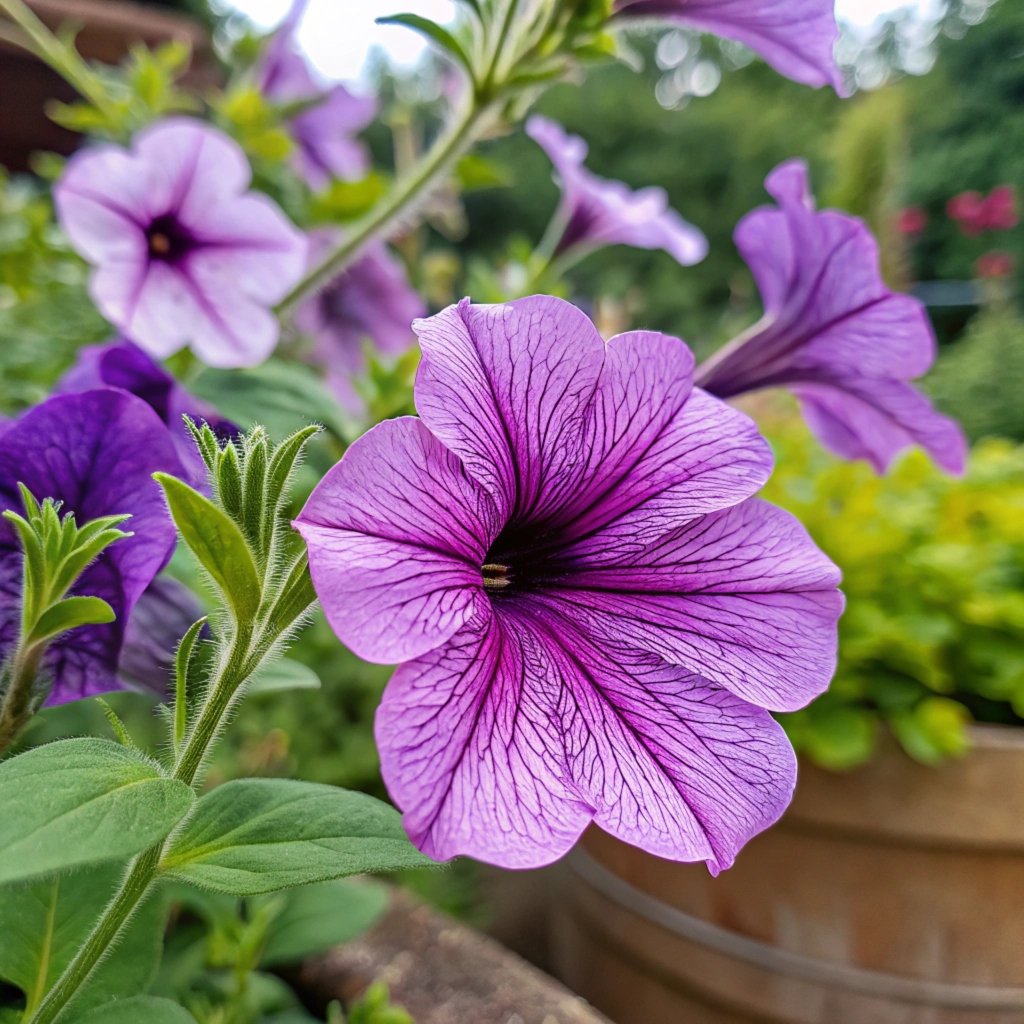
Petunia is a popular annual that comes in a wide range of colors. Its easy-to-grow nature and nectar-rich flowers make it a great choice for attracting hummingbirds.
Petunias produce trumpet-shaped blooms that are perfectly suited for hummingbird feeding.
These versatile plants can be used in hanging baskets, window boxes, or as ground cover in garden beds.
They bloom continuously from spring until frost, providing a long-lasting food source for hummingbirds. While red petunias are particularly attractive to hummingbirds, these birds will visit flowers of all colors.
Petunias prefer full sun and well-draining soil. They are relatively low-maintenance but benefit from regular deadheading to encourage continuous blooming.
By incorporating petunias into your garden, you can create colorful displays that will attract hummingbirds throughout the growing season.
9. Zinnia
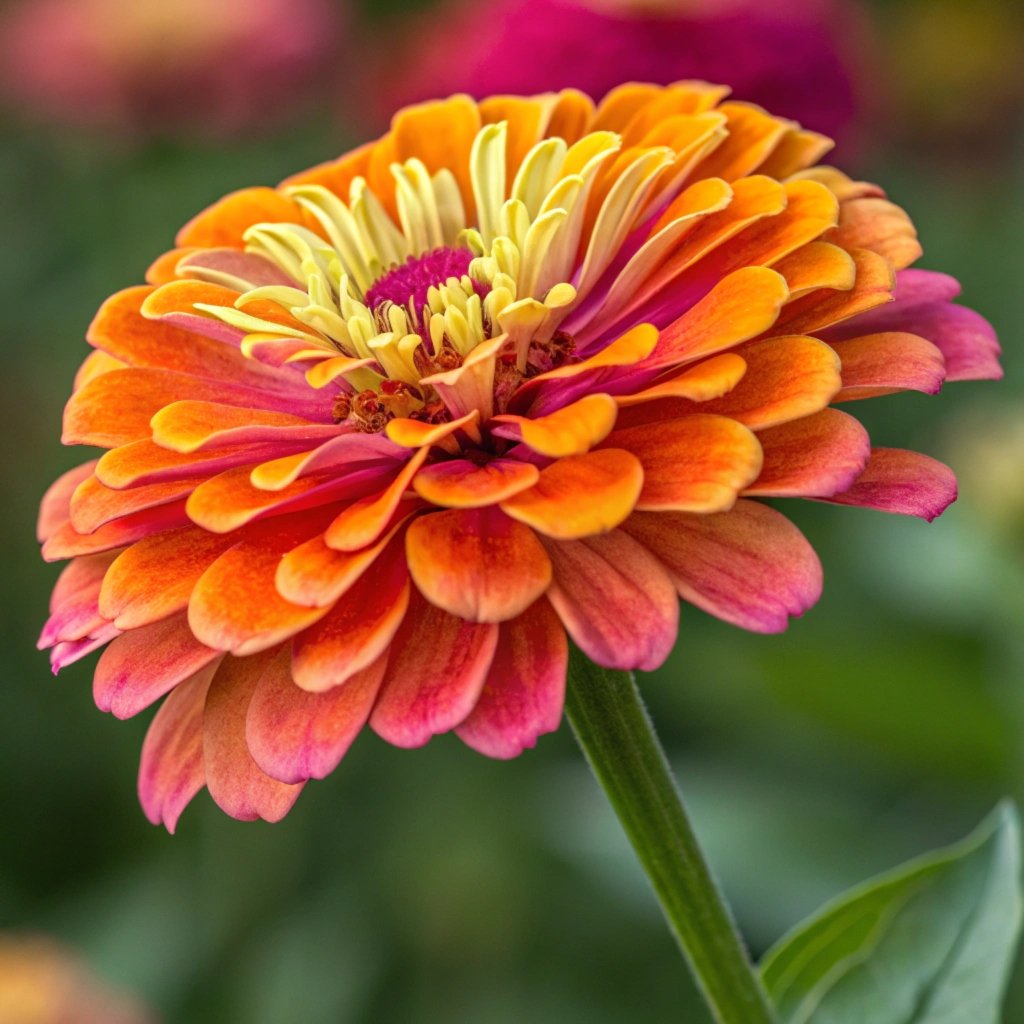
Zinnia is a hardy annual that blooms throughout the summer, providing a continuous source of nectar for hummingbirds. These cheerful flowers come in a wide array of colors and sizes, from dwarf varieties to tall, statuesque plants that can reach up to 4 feet in height.
Zinnias are known for their long-lasting blooms and ability to attract a variety of pollinators, including hummingbirds.
They produce single, semi-double, or double flowers in shades of red, orange, yellow, pink, purple, and white. The single and semi-double varieties are best for attracting hummingbirds, as they provide easier access to nectar.
These sun-loving annuals are easy to grow from seed and can be sown directly in the garden after the last frost. They prefer well-draining soil and regular watering.
By planting zinnias, you’ll not only attract hummingbirds but also add a burst of color to your garden that lasts all summer long.
10. Butterfly Bush
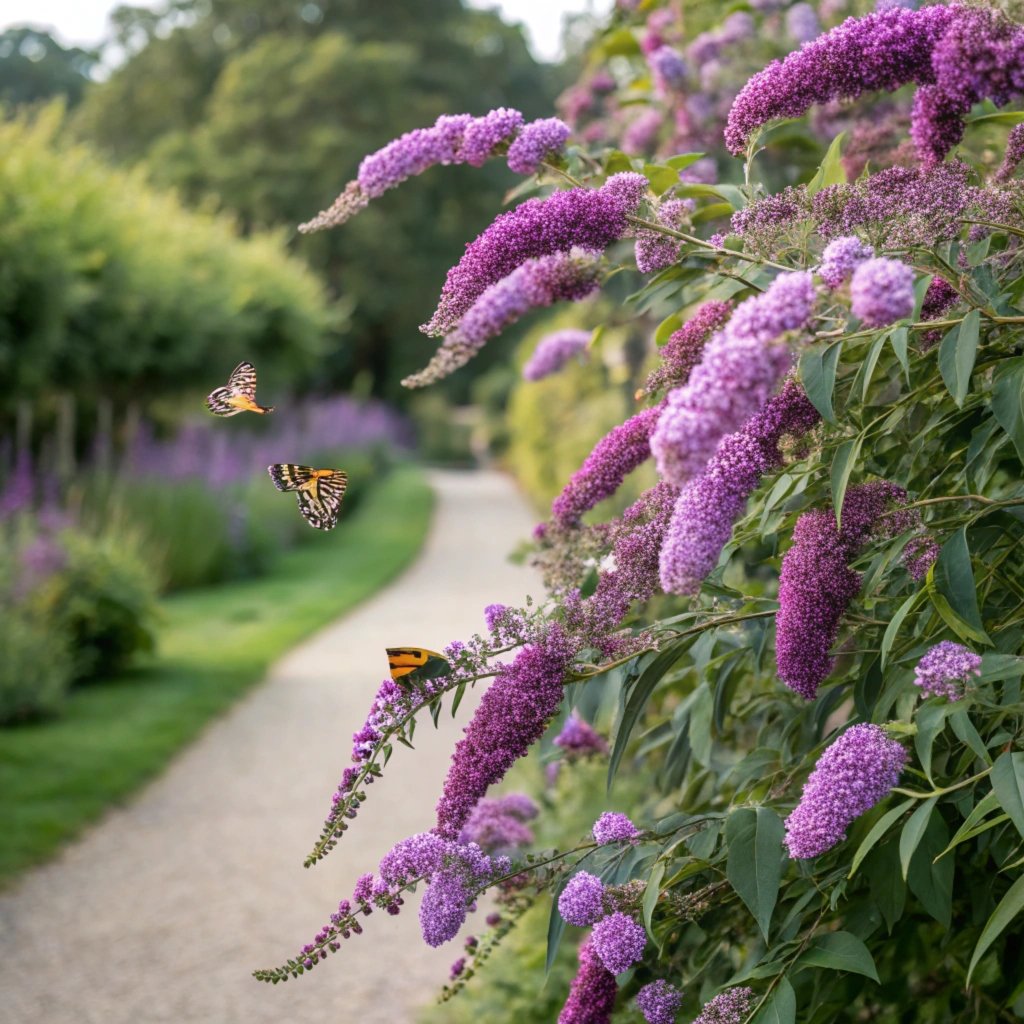
The Butterfly Bush (Buddleia) is not only attractive to butterflies but also to hummingbirds. Its fragrant flowers and long blooming season make it a valuable addition to any garden.
This deciduous shrub produces long, cone-shaped clusters of small, tubular flowers that are rich in nectar.
Butterfly Bush comes in various colors, including purple, pink, white, and blue. It blooms from mid-summer to fall, providing a late-season nectar source for hummingbirds.
The plant can grow quite large, reaching up to 10 feet in height, making it an excellent backdrop for other garden plants.
When planting Butterfly Bush, choose a location with full sun and well-draining soil. It’s important to note that some varieties can be invasive in certain regions, so it’s best to opt for sterile cultivars or native alternatives where possible.
Regular pruning can help maintain the plant’s size and encourage more blooms.
Tips for Planting a Hummingbird Garden
When planting a hummingbird garden, consider the layout and variety of plants. Ensure that there are flowers blooming at different times of the year to provide a consistent food source.
Create a diverse landscape with plants of varying heights to provide different feeding levels for hummingbirds.
Incorporate both annuals and perennials into your garden design. Annuals like petunias and zinnias can provide quick color and nectar sources, while perennials like salvias and bee balm offer long-term stability.
Don’t forget to include some native plants, as these are often well-adapted to local conditions and familiar to native hummingbird species.
Consider planting flowers in groups or drifts rather than single specimens. This makes it easier for hummingbirds to spot the flowers from a distance and provides a more substantial nectar source. Also, include some trees or tall shrubs nearby to provide perching spots for hummingbirds.
Common Mistakes to Avoid
Avoid common mistakes such as using pesticides or planting invasive species. These can harm hummingbirds and disrupt the balance of your garden ecosystem.
Pesticides can be particularly harmful to hummingbirds, as these birds also feed on small insects for protein.
Another mistake to avoid is overplanting a single species. While it’s tempting to fill your garden with the most attractive hummingbird plants, a diverse garden is more resilient and provides a varied diet for these birds. Aim for a mix of different flower shapes, colors, and blooming times.
Don’t forget to provide water sources for hummingbirds. While they get most of their hydration from nectar, they also appreciate shallow, moving water for bathing and drinking.
A small fountain or dripper can be an attractive addition to your hummingbird garden.
FAQs
What flowers are best for attracting hummingbirds?
The best flowers for attracting hummingbirds are typically tubular-shaped and brightly colored, especially in shades of red, orange, and pink. Some top choices include trumpet honeysuckle, bee balm, cardinal flower, salvia, and fuchsia. However, hummingbirds will visit a wide variety of flowers, so it’s best to plant a diverse selection.
How can I make my garden more attractive to hummingbirds?
To make your garden more attractive to hummingbirds, focus on planting a variety of nectar-rich flowers that bloom at different times throughout the growing season. Incorporate plants with tubular shapes and vibrant colors, particularly red, orange, and pink. Additionally, consider adding hummingbird feeders filled with a sugar-water solution to supplement natural nectar sources.
When is the best time to plant flowers for hummingbirds?
The best time to plant flowers for hummingbirds depends on your local climate. Generally, spring is the ideal time to plant most flowers, as this allows them to establish roots before the heat of summer. In warmer regions, you can also plant in the fall for early spring blooms.
How can I maintain my hummingbird garden?
Maintaining your hummingbird garden involves regular watering, deadheading spent blooms, and ensuring that plants have adequate sunlight and space to grow. Keep an eye out for pests and diseases but avoid using harmful chemicals that could harm hummingbirds.
Can I attract hummingbirds with feeders alone?
While feeders can attract hummingbirds, they are best used in conjunction with natural nectar sources. Many hummingbirds prefer feeding from flowers because they provide a more varied diet and essential nutrients beyond just sugar water.
What should I do if I see a sick or injured hummingbird?
If you encounter a sick or injured hummingbird, it’s essential to handle the situation carefully. First, observe the bird from a distance to determine if it truly needs help. If it appears injured or unable to fly, gently capture it using a soft cloth or towel.

Hello, I’m Emily Price, the founder of Birds Affection. As a passionate bird enthusiast and spiritual seeker, I’ve always been fascinated by the symbolic meanings and mystical connections between birds and our lives. On this website, I share my knowledge and insights on the spiritual significance of various bird species, exploring their roles as messengers, guides, and teachers. Through my writing, I aim to inspire and educate others on the profound wisdom and beauty that birds bring to our world. Join me on this journey as we delve into the enchanting realm of bird symbolism and discover the hidden meanings behind these magnificent creatures.

